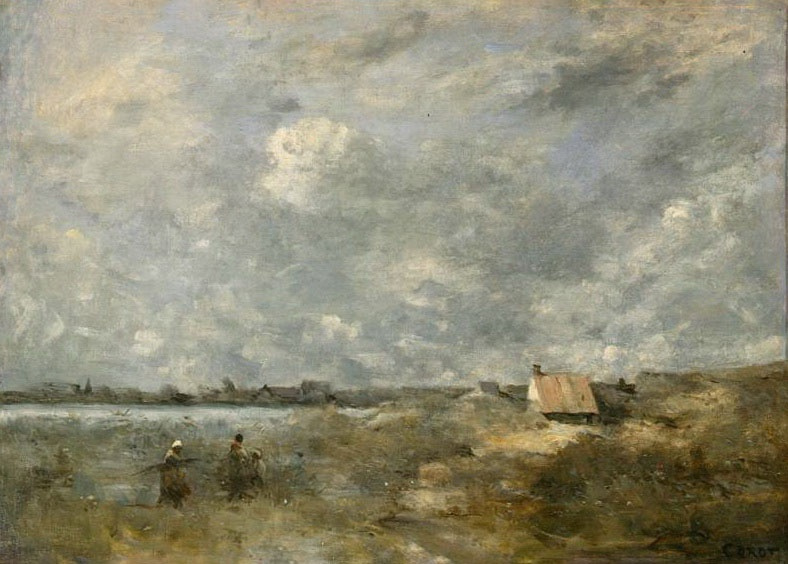log in
Enter site
Login to use Arthive functionality to the maximum
The Stormy Weather. Pas de Calais
Camille Corot • Painting, 1870, 38×55 cm
Description of the artwork «The Stormy Weather. Pas de Calais»
You cannot find steep climbs and sheer falls in Corot’s biography. The life of this modest, silent and easy man was long and untroubled in general. Comparing to the exciting adventures experienced by his mates, it could seem so mean that sometimes Corot was called a man without his life story. He did not disassemble the Vendôme Column as Gustave Courbet did, he did not attack his ideological opponent with a razor in his hand like Van Gogh did. Corot kept away from women and preferred stable relations with his canvases and paints rather than whirlwind romances. He was not rebellious at all; instead of breaking system, he would rather serve it. He was successful; first the French government decorated him with the cross of the Légion d'honneur and then he was awarded a second-class medal at the Salon. He avoided any movements, schools and parties; he shrugged off the Barbizon School and criticized the Impressionists. However, the conflict disappeared as soon as it started. The Barbizon artists called him their friend and the Impressionists claimed that he cleaned out painting from the dogmas of Neoclassicism (to Corot’s sincere bewilderment). Father Corot was loved and recognized by everybody.
Camille Corot’s lifestyle defined the intonation of his lyric landscape. Most of his artworks depict majestic peace of undisturbed nature. Most of his paintings were executed with usual and somewhat somnolent splendor. That’s why the landscapes by Corot with wind-blown tree crowns, threatening and dark sky and paintings full of ozone and feeling of storm appear so exhilarant.
This late landscape could seem unrepresentative with its stormy weather in Pas de Calais; so stormy, unexpected and unusual Corot. The artwork seems to be created with a fast moving and impulsive paintbrush; could it belong to the artist who always preferred diligence rather than spontaneity?
Yet, appearances can be deceiving. On the contrary to the famous Gust of Wind, there is no drama in this artwork except recognizable and practically monochrome silver palette and optimism of the author revealed in both paintings. Gusts of wind do not make people to hump shoulders; the peasants do not seem helpless and miserable against dark abysmal sky; they continue their way routinely and slowly. Corot is fascinated with the storm with the same delight he has adored sleeping valleys, deserted bridges lazing in the sun and virgin smooth surface of ponds. He believes that the clouds will dissipate. A peasant hut will survive. The storm will pass in a distance.
Author: Andrew Zimoglyadov
Camille Corot’s lifestyle defined the intonation of his lyric landscape. Most of his artworks depict majestic peace of undisturbed nature. Most of his paintings were executed with usual and somewhat somnolent splendor. That’s why the landscapes by Corot with wind-blown tree crowns, threatening and dark sky and paintings full of ozone and feeling of storm appear so exhilarant.
This late landscape could seem unrepresentative with its stormy weather in Pas de Calais; so stormy, unexpected and unusual Corot. The artwork seems to be created with a fast moving and impulsive paintbrush; could it belong to the artist who always preferred diligence rather than spontaneity?
Yet, appearances can be deceiving. On the contrary to the famous Gust of Wind, there is no drama in this artwork except recognizable and practically monochrome silver palette and optimism of the author revealed in both paintings. Gusts of wind do not make people to hump shoulders; the peasants do not seem helpless and miserable against dark abysmal sky; they continue their way routinely and slowly. Corot is fascinated with the storm with the same delight he has adored sleeping valleys, deserted bridges lazing in the sun and virgin smooth surface of ponds. He believes that the clouds will dissipate. A peasant hut will survive. The storm will pass in a distance.
Author: Andrew Zimoglyadov


